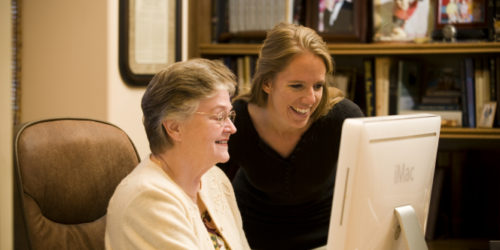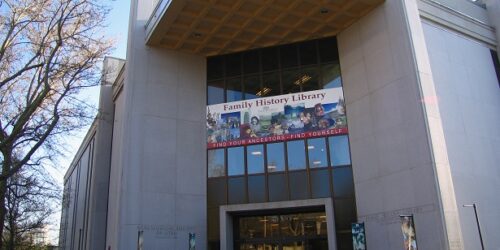Watching, Waiting And Editing The Family Search Family Tree
 Many people do not seem to understand why the FamilySearch Family Tree is a wiki-based program. When Family Tree was new this was a big deterrent for a lot of people. They just didn’t like the idea that someone could come into “their” person’s information and make changes. A wiki-based program is created for that very purpose. Google defines it this way. “Wikis perform a very useful service in a simple way. A wiki allows a group of people to enter and communally edit bits of text. These bits of text can be viewed and edited by anyone who visits the wiki. That’s it.” Wikipedia is a perfect example. Simply stated, by having a worldwide family tree that can be edited we can eventually have a more accurate and well-documented tree with the most correct information. Some people still refuse to get involved. They completely miss the point that our family tree is not ours alone. Our ancestors do not belong solely to us. They are shared with thousands of other people. As we catch the vision of why we have it, we can see the brilliance in it. As James Tanner has said for years, “The problem is not the FamilySearch/Family Tree, it is the solution!”
Many people do not seem to understand why the FamilySearch Family Tree is a wiki-based program. When Family Tree was new this was a big deterrent for a lot of people. They just didn’t like the idea that someone could come into “their” person’s information and make changes. A wiki-based program is created for that very purpose. Google defines it this way. “Wikis perform a very useful service in a simple way. A wiki allows a group of people to enter and communally edit bits of text. These bits of text can be viewed and edited by anyone who visits the wiki. That’s it.” Wikipedia is a perfect example. Simply stated, by having a worldwide family tree that can be edited we can eventually have a more accurate and well-documented tree with the most correct information. Some people still refuse to get involved. They completely miss the point that our family tree is not ours alone. Our ancestors do not belong solely to us. They are shared with thousands of other people. As we catch the vision of why we have it, we can see the brilliance in it. As James Tanner has said for years, “The problem is not the FamilySearch/Family Tree, it is the solution!”

We work collaboratively to establish a worldwide tree with accurate sources, different perspectives, stories, and photos, etc. The idea is to share for the benefit of all, not hoard and hide what we know or think we know. We record our belief regarding the ancestor and then verify that notion with sources that we cite. “I heard”, or, “He said” is not enough. We need some proof of records that go beyond hearsay. Are the records always correct? No. That is why it is best to get more than one source about things when possible. The record citation shows the other person exactly where you got your information By adding sources for vital records, Bible inscriptions, etc., we allow others to see why we have added it. They can also see it for themselves if they have doubts or questions. The hope is that because we have done a thorough job of this, another person will not have to go to through the same process, duplicating the efforts to research the same person as we have. The other side of that coin is, perhaps, we will gain from something someone else had spent many hours researching. FamilySearch has given us some great ways to keep an eye on the people we work on in the Family Tree. Many hands can make lighter work if done correctly.
We can Watch people on Family Tree. Watch the person by going to their Person Details Page and clicking on Details. Then click the star to watch the person’s details, in case they might have been changed or edited by another user. Family Search will notify you by email once a week of changes made to people you watch. To unwatch a person just click on the star again.
Recently I noticed someone had changed several things on my husband’s grandmother, Bertha Johnson. This caught my attention because I had done extensive research about her and had even written a book about her for the family. Now, what do I do?
I investigate my own work first, checking my sources, locality, math for dates and years, etc. I don’t just get on Family Search Messages ( found near the top of the home page at familysearch.org) to interrogate the person who added a new child and deleted some of my sources.
Then I check the other person’s entries for accuracy. In this case she had deleted the 1930 census record from Indiana, replacing it with one from California. Bertha Johnson’s parents had all of their 4 children in the midwest. She had inadvertently added her ancestor to the wrong family because her ancestor had the same parents names, John and Alma Johnson and their children at nearly the same time. An easy mistake to make. Especially with a surname like Johnson and a given name like John.
When I approached her via FS Messages in a friendly way and explained it what happened, she was grateful. As we collaborated, she and her consultant made most of the corrections to the page, and I was able to prevent her from “barking up the wrong tree” from here on out. That is how it works and everybody wins. The tree is now accurately documented for two people through friendly collaboration. This is happening all over the family tree that now has 1.2 billion users. Can you see how over time it will just keep getting better? It is a work in progress. Working together is often better than working alone. Just like The Family History Guide makes this work easier, more efficient, and more enjoyable, so does a proper collaboration on the FamilySearch/Family Tree.
Remember if you are not sure how to edit entries on the Family Tree people, see Project 1 Choice 6 on the Family History Guide for step by step instructions. The first few times you try this it is good to have a consultant help you if you need it. The experience will bring you the confidence to do it independently as you progress through all of Project 1 step by step. Practice makes perfect.
As a user of FS/FT, always strive for accuracy in your work. Don’t ever delete someone’s added sources without attempting to communicate with them first. If you cannot reach them, make necessary edits, add your sources to the Sources section on the Person’s Details Page with a note/message inviting collaboration. Always fill in the reason boxes for the additions or changes you make on any person in the box provided. If another person is non-cooperative and re-enters the incorrect information without explanation again after you have sent reasonable proof, contact Family Search with your issues and they will mediate. Whatever our own personal rules of engagement are on these matters, they should include: Be kind, be patient, and be helpful. We are all at different places in our learning and we are rarely always right. Always be willing and open to learning something new about common ancestors.






This is a very good article, Bonnie. So true especially your last section about patient. Most of the frustration in dealing with the wiki formula of genealogy lies in the fact that people forget to document “why” they are making a change to our tree. Let’s say that we have documented our sources and someone keeps coming back and changing it to what “they know” from a personal family oral history. To them, they feel it is correct and they don’t feel that they are wrong in changing it. It becomes a banter somewhat like ping-pong, not answering our emails requesting some sort of verification. There have been many hurt feelings over this as evident by the many postings in Social Media. Many are requesting the ability to petition for banning the repeat offender. Wondering if getsatisfaction.com could auto program a message that comes up stating that a verification if correlating data and corroborated evidence must be input to complete the change. I know it currently makes a passive request but you don’t have to physically clear the mandatory text requesting the affirmed data to proceed with your change.
I have much to repent about. Including the patience part. I’m not a happy camper when someone “borrows” my research and my family member is deleted when mine is merged with theirs. I will work on this and try to be more understanding. Thank you for your article. It put a new perspective on the purpose of Family Search. I wouldn’t call myself a “hoarder” of my information but if a mistake is made, I want it to be mine.